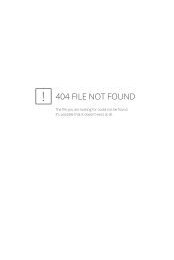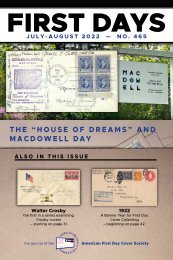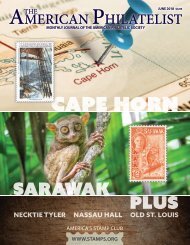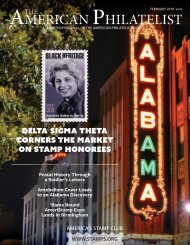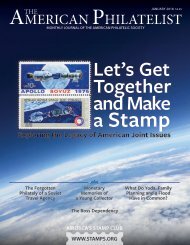Writing for ATA
Topical Time is a bi-monthly journal comprised of regular columns (prepared by authors who contribute ongoing material) and longer feature articles written primarily (but not exclusively) by ATA members. The journal is dependent on member-submitted content to publish high-quality and diverse articles that are interesting to a wide variety of topical stamp collectors. Consequently, members are encouraged to submit story ideas, working manuscripts, and completed articles for consideration for publication. This publication serves as a guide to preparing manuscripts for submission to Topical Time.
Topical Time is a bi-monthly journal comprised of regular columns (prepared by authors who contribute ongoing material) and longer feature articles written primarily (but not exclusively) by ATA members. The journal is dependent on member-submitted content to publish high-quality and diverse articles that are interesting to a wide variety of topical stamp collectors. Consequently, members are encouraged to submit story ideas, working manuscripts, and completed articles for consideration for publication. This publication serves as a guide to preparing manuscripts for submission to Topical Time.
Create successful ePaper yourself
Turn your PDF publications into a flip-book with our unique Google optimized e-Paper software.
26 TOPICAL TIME<br />
<strong>Writing</strong> <strong>for</strong> Topical Time<br />
an authors guide to article preparation<br />
by Martin Kent Miller
MAY-June 2022 27<br />
<strong>Writing</strong> can be both a rewarding experience and a challenging<br />
escapade. An experienced collector once said, “If you want to<br />
discover how much you don’t know about a topic, write an article<br />
<strong>for</strong> a philatelic journal.” As Topical Time transitions to a new<br />
editor, it seems an appropriate time to focus on some guidelines<br />
<strong>for</strong> authors. The following in<strong>for</strong>mation provides direction <strong>for</strong><br />
writing and preparing images <strong>for</strong> your article. Since we enjoy a<br />
visually-rich hobby, great care and scrutiny are directed at the<br />
scans, illustrations, and photographs necessary to communicate<br />
the details of our topics and the narration of our hobby.<br />
As you review these guidelines, understand that my goal is to<br />
maintain and expand the excellent reputation of Topical Time by<br />
assisting authors in producing the best possible content. Simply<br />
stated, one of the editor’s responsibilities is to make the writers<br />
look good in print. To that end, if you have questions about these<br />
guidelines or are curious about your idea’s suitability <strong>for</strong> Topical<br />
Time, please reach out to me. You can reach me by email at<br />
editor@americantopical.org. I will note here that I receive dozens<br />
of emails each day, and it is not likely that you will hear from me<br />
instantly. However, I review emails regularly, and I will get back<br />
to you as quickly as possible.<br />
Topical Time is a bi-monthly journal comprised of regular<br />
columns (prepared by authors who contribute ongoing material)<br />
and longer feature articles written primarily (but not exclusively)<br />
by <strong>ATA</strong> members. The journal is dependent on member-submitted<br />
content to publish high-quality and diverse articles that are<br />
interesting to a wide variety of topical collectors. Consequently,<br />
members are encouraged to submit story ideas, working manuscripts,<br />
and completed articles <strong>for</strong> consideration <strong>for</strong> publication.<br />
As the editor, I generally give preference to materials submitted<br />
by <strong>ATA</strong> members. Still, I will publish materials from other sources,<br />
especially when those materials are timely and relevant to the<br />
association’s interests.<br />
My content goal is to maintain a balance between longer articles<br />
(some of which may be multipart), short vignettes, and reasonable<br />
news segments concerning the association and the hobby<br />
at large. In the coming months, I plan to present some of the<br />
news material through the website at AmericanTopical.org. Additionally,<br />
some articles may be abbreviated and shared publicly<br />
online to help promote membership. Finally, I plan to start implementing<br />
a new plat<strong>for</strong>m <strong>for</strong> Topical Time Online.<br />
All materials intended <strong>for</strong> publication need a compelling narrative<br />
and a clear topical focus centered around a solid philatelic<br />
foundation. That means your article needs to discuss stamps within<br />
the framework of a specific topic and be interesting to read.<br />
Simply illustrating an article about physics with stamps that show<br />
scientists, laboratories, and equipment will not work. <strong>ATA</strong> members<br />
represent diverse experiences and interests, but we all share a<br />
fascination with stamps. My goal with each article is <strong>for</strong> the reader<br />
to gain applicable knowledge even if they never develop a devotion<br />
to the topic presented.<br />
The new Topical Time<br />
Online should improve<br />
on-screen reability.
28 TOPICAL TIME<br />
All materials submitted are subject to peer review, comments<br />
and editing be<strong>for</strong>e acceptance <strong>for</strong> publication. The development<br />
of authors is an additional role <strong>for</strong> the journal’s editor. If you<br />
have never be<strong>for</strong>e written <strong>for</strong> publication, please consider starting<br />
a manuscript. I am happy to work with new writers. Many of<br />
the current contributors are experienced topical philatelists and<br />
well-published writers; they all wrote their first article at some<br />
point.<br />
When preparing materials <strong>for</strong> submission, please consider the<br />
following points. I present this in<strong>for</strong>mation to assist you in the<br />
preparation of manuscripts. These directions are based on years<br />
of receiving, reviewing and processing materials. The commercial<br />
printing process results in some of the more technical guidelines,<br />
but experience has in<strong>for</strong>med the outline to follow.<br />
<strong>Writing</strong><br />
Topical Time follows an adapted <strong>for</strong>m of the Associated Press<br />
Stylebook (apstylebook.com), which strives <strong>for</strong> maximum readability<br />
through the simplicity of style. Such a style guide aims to<br />
create a basis <strong>for</strong> writing that provides consistency from article to<br />
article. This guide <strong>for</strong>ms the general rules <strong>for</strong> the preparation of<br />
the journal. Naturally, the specifics of philately and topical stamps<br />
guide some deviations from the style guide, but the unique language<br />
of the hobby essentially <strong>for</strong>ms new style specifics. The bullet<br />
points below address some of the typical style revisions made<br />
with content published in Topical Time. Additionally, these points<br />
discuss techniques that will improve the usability of your files.<br />
Ownership<br />
When you submit a manuscript <strong>for</strong> consideration, I assume<br />
that you have full rights to the material. This assumption means<br />
that all contributors to the work agree on submitting it and agree<br />
to its publication in Topical Time and other <strong>ATA</strong> outlets, like the<br />
website.<br />
<strong>ATA</strong> reserves First North American Serial Rights, and we require<br />
perpetual, non-exclusive publishing rights in all media. This<br />
approach means that we may republish your article at any time,<br />
but you retain all other rights to your work and may have it published<br />
elsewhere. <strong>ATA</strong> copyrights the contents of each issue of<br />
Topical Time as a whole work. It is not unusual <strong>for</strong> us to receive<br />
requests from other journals to reprint articles. If you agree to reprint,<br />
we ask only that the reprint include acknowledgment of the<br />
article’s appearance in Topical Time with the original issue date.<br />
Style<br />
• Please write your article in a conversational tone and in the<br />
first person. Remember that <strong>ATA</strong> members come from diverse<br />
backgrounds, and not everyone is a specialist in the topic you are<br />
presenting. Provide sufficient background in<strong>for</strong>mation so that<br />
readers can follow your discussion and, wherever possible, provide<br />
in<strong>for</strong>mation useful to all collectors.
MAY-June 2022 29<br />
• When including states in the text of your manuscript (not<br />
when writing mailing addresses), please spell out the state name.<br />
For example, when writing about the beaches of North Carolina,<br />
do not write about the beaches of NC.<br />
• Numbers below 10 are spelled out (one through nine),<br />
while 10 and higher are written as digits. Please use commas<br />
where appropriate.<br />
• Dates are written in month, date, year <strong>for</strong>mat. So, Veterans<br />
Day this year would be written “November 11, 2022.”<br />
• Always spell out an acronym the first time you use it; add<br />
the abbreviation in parentheses (even if you think everyone should<br />
know that MOPE stands <strong>for</strong> My One-Page Exhibit).<br />
• Remember that generic websites such as Wikipedia are not<br />
always reliable sources of factual in<strong>for</strong>mation. When researching<br />
online, please use primary sources whenever possible.<br />
Files & Structure<br />
• Do not <strong>for</strong>mat the text when sending electronic manuscripts.<br />
Use one font in regular, bold and italic. No centering<br />
or columns. Please do not create multiple, individual text blocks<br />
within the document. Due to the demands of production, handwritten<br />
or hard copy manuscripts cannot be accepted.<br />
• The preferred file <strong>for</strong>mat <strong>for</strong> text is Microsoft Word. At a<br />
minimum, please prepare your text using software that can save to<br />
one of the following <strong>for</strong>mats: .doc, .docx, .rtf, or .odt. If you do<br />
not have access to software that can produce these file types, don’t<br />
hesitate to get in touch with me to discuss the software you intend<br />
to use. Microsoft Publisher files are not acceptable.<br />
• Do not insert scans or illustrations into your electronic text<br />
file. Each image should be submitted electronically as a separate<br />
file. Images should be named with their corresponding figure<br />
number. To indicate the ideal position of the image within the<br />
text, please include text corresponding to the image file name. In<br />
this example, the author indicates that image 5 should be positioned<br />
relative to the break between two paragraphs:<br />
“...when it was clear the committee had selected<br />
an alternate design.<br />
(Figure 5)<br />
Several years later, an unexpected meeting...”<br />
• For most articles, each image will need a caption to connect<br />
the figure with the text. Manuscripts should include captions.<br />
Ideally, captions should be placed in the text where the corresponding<br />
image would most logically appear.<br />
• Do not place captions in separate text blocks within your<br />
document.<br />
• Due to spacing, pagination, and other considerations, images<br />
may not always appear at your preferred location, but I will<br />
make every ef<strong>for</strong>t to design layouts with a logical flow.
30 TOPICAL TIME<br />
Images<br />
Naturally, images are vital to the articles published in Topical<br />
Time. Following the instructions below will help ensure the<br />
quality and clarity of the photographs and scans that accompany<br />
your work.<br />
When manuscripts are received, it is expected that the images<br />
relevant to the story will be included as separate files. The review<br />
process includes examining the images to ensure they are of sufficient<br />
resolution and quality <strong>for</strong> commercial reproduction.<br />
• The minimum image resolution <strong>for</strong> print is 300 dots per<br />
inch (DPI) at the actual size to be printed. When scanning materials<br />
that are smaller than 3 inches by 3 inches, I prefer a resolution<br />
of 600 DPI. This higher resolution af<strong>for</strong>ds greater latitude in<br />
layout and scaling of images <strong>for</strong> detail.<br />
• Do not apply sharpening or special effects filters to your<br />
images. While these adjustments may improve the on-screen appearance<br />
of an image, over-sharpening has a detrimental effect<br />
when the image is professionally printed. If image adjustment is<br />
needed, it will be handled during layout and production.<br />
• Please scan images against a contrasting color mat. Do not<br />
use a black, gray, or white background (see Figure 1). The contrasting<br />
color aids in the image processing that must be applied<br />
be<strong>for</strong>e printing.<br />
• For images that can overlap (such as the front and back of<br />
a cover), please provide the full scan of both images. This practice<br />
allows latitude in layout and typically results in a better quality<br />
reproduction.<br />
• It is not necessary to align items when scanning. All images<br />
will be aligned during the production process. Additionally, the<br />
reproduction quality of materials with finely engraved lines is often<br />
enhanced by scanning the specimen at an angle.<br />
4<br />
7<br />
Figure 1. The ideal image (left) is scanned against a contrasting color<br />
background with 1/8-inch or more space around the subject. The image on<br />
the right represents a scan that is more difficult to prepare <strong>for</strong> print and that<br />
may produce a lower quality image when printed.
MAY-June 2022 31<br />
• Do not crop images tightly to the subject. Leaving a minimum<br />
of 1/8 inch around the scanned material makes processing<br />
the image easier.<br />
• Save scans and images as .jpg, .tif, .psd or .png files. The<br />
preferred <strong>for</strong>mat is JPG at high (10+) quality. Some software may<br />
refer to this as “low compression” or “highest quality.”<br />
• Do not save your image files in .pdf or .bmp <strong>for</strong>mats.<br />
• Images saved from websites are usually low-resolution files.<br />
If your article requires such an image, please include the web address<br />
where the image was found.<br />
• Color images scanned from other printed<br />
materials (books and magazines - Figure 2) are<br />
often subject to copyright issues and generally<br />
do not reproduce well. If such images are essential<br />
to your work, please consider contacting the<br />
source and requesting digital files.<br />
• If your article includes images that are<br />
not part of your collection, please include some<br />
detail about the source of each image.<br />
• If you do not have access to a scanner,<br />
<strong>ATA</strong> can scan materials <strong>for</strong> you. If you need to<br />
send the actual stamps, covers or other philatelic<br />
items, please pack them carefully and insure<br />
them, and provide return postage. The return<br />
time is dependent on the backlog when your<br />
materials are received. Please advise via email<br />
that you will be sending materials. We will acknowledge<br />
receipt of your package upon arrival.<br />
Files & File Transfer<br />
I use an online file management system <strong>for</strong> the transfer of<br />
manuscript files. This system allows you to upload your manuscript<br />
and the images needed to complete your article. Once your<br />
files have been successfully uploaded, the system notifies me that<br />
the materials have been submitted. It will also send you a confirmation<br />
that the materials were sent. Manuscripts submitted using<br />
this system are given priority <strong>for</strong> review.<br />
Submit your manuscript here:<br />
https://americantopical.org/topical-time-submissions<br />
This web page contains a <strong>for</strong>m <strong>for</strong> your in<strong>for</strong>mation and includes<br />
separate fields <strong>for</strong> uploading your manuscript and images.<br />
You can select and upload as many images as needed. You can also<br />
upload a .zip file of your manuscript. Once you have completed<br />
the <strong>for</strong>m, click the SUBMIT button at the bottom of the page to<br />
send your files.<br />
Recent changes in online file transfer services like WeTransfer.<br />
com and SendAnywhere.com have resulted in difficulty receiving<br />
files properly. Please do not use these services to transfer files.<br />
Figure 2. Images scanned from printer materials<br />
often create quality issues including moiré<br />
patterns and bleed-through of images from the<br />
back side of the page. These images may also<br />
violate other’s copyright.
32 TOPICAL TIME<br />
Article Submission Page<br />
https://qrcodes.pro/n0sTWu<br />
You also can mail your materials to me at Martin Kent Miller,<br />
<strong>ATA</strong>, PO Box 2143, Greer, SC 29652-2143 USA. If you prefer to<br />
send material via UPS, FedEx, or another courier (recommended<br />
if sending materials to be scanned), please ship to Martin Kent<br />
Miller, Philatelic Press, 1361 W. Wade Hampton Blvd., Suite<br />
F-#102, Greer, SC 29650 USA. Please send your materials on<br />
a USB flash drive. Hard copy manuscripts are not acceptable <strong>for</strong><br />
publication.<br />
Conclusion<br />
The purpose of these guidelines is to help you produce an article<br />
that reads well and that looks good in print. I encourage all<br />
<strong>ATA</strong> members to consider submitting an article <strong>for</strong> Topical Time.<br />
While the process can be demanding, the results are rewarding<br />
<strong>for</strong> both the author and the audience. If you have any questions<br />
about the process or the technical requirements, please feel free to<br />
contact me directly at editor@americantopical.org. d




